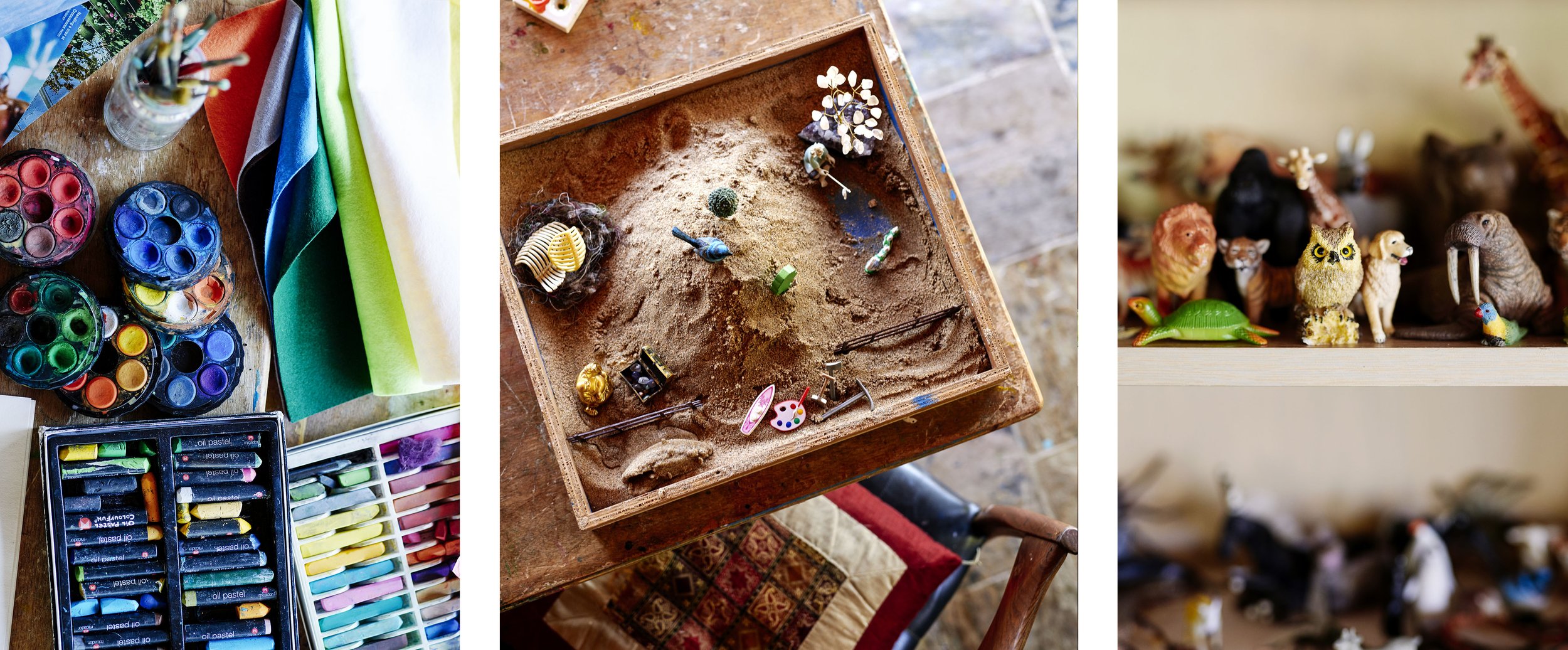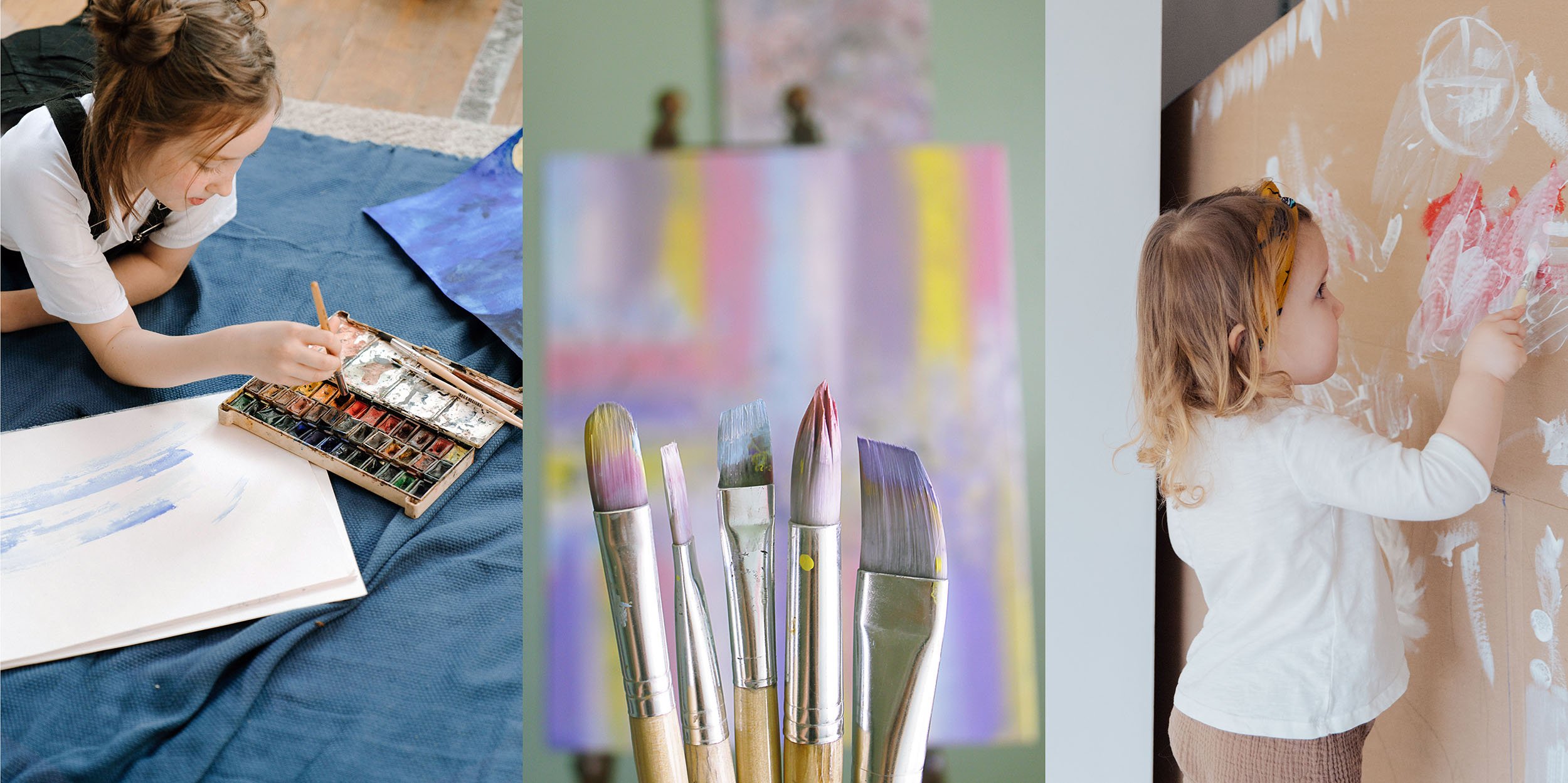
Art Therapy for Trauma Processing, Mental Health and Wellbeing
For Trauma Processing, Mental Health and Wellbeing
Integrated Trauma Therapy (ITT) recognises that not all trauma can be expressed verbally, and therefore requires other avenues to support the healing process. Art Therapy uses creativity to enable healing from stress and trauma. Along with traditional Art Therapy process, ITT offers Clayfield, Guided Drawing, Sand-tray, Workshops and Dream Exploration (Art Th. Frameworks).
How does Art Therapy work?
Art Therapy uses the medium of visual art as a tool to explore, express, communicate, and gain insight. The interplay between you, the art materials and the artwork makes for a dynamic and rich experience. You can choose any medium and method on offer, such as painting, drawing, collage, clay and other art materials to explore feelings, thoughts, behaviours, conflicts, life circumstances and your soul desire.
Art Therapy is an action therapy. It accesses the right brain and is predominantly a non-verbal therapy. The art materials themselves hold therapeutic qualities and value, and the emphasis is on the process of making. The end product is not the focus, but rather part of the process. When immersed in a state of flow (frameworks, Art Therapy Flow), the artwork emerges from a series of choices and impulses that come from a dialogue you have with yourself. It is guided by our inner reality known to us as our thoughts, beliefs, values, feelings, body and view of ourselves. This can be conscious or unconscious.
When the artwork is completed it becomes a point of discussion for reflection. The Art Therapist makes no definitive interpretations regarding the artwork. You have the option to share, discuss and collaboratively explore the artwork with words, but your involvement is paramount.
Used in conjunction with traditional counselling and psychological techniques, art is a supportive medium in the therapeutic process. No artistic experience or prior knowledge is required.
Art Therapy can help sufferers of trauma and pain to address painful experiences safely, engaging their frontal cortex so they can also be observers of that trauma and pain. It can make what seems unreal, real. By providing symbolic meaning to the bodily experience it can be a helpful distancing tool for trauma survivors to practice and regain a locus of control and process their experience. It also enables them to reframe the trauma and develop a relationship to it from a safe distance.
It is an exceptional tool for children and adolescents, where the world of imagery plays an important role. It helps them find language to understand emotional experiences that may feel overwhelming and confusing. It also acts as a vehicle to communicate internal states. Art Therapy can also assist with physical developmental delays. It can serve as a tool to help with sensory integration, development of motor skills, sensorimotor completion, and the repair of attachment disorders. It also aids motivation and stimulates shutdown presentations.
Art Therapy can allow you to:
Take appropriate action towards positive change and completion via the act of creativity
Problem solve, organise and map inner states visually and symbolically
Practice mindfulness using concentrated focus that centres the mind
Build capacity for distress tolerance and activation to be transformed
Differentiate between the helpful and resourceful aspects of yourself from inhibited and negative impulses
Adopt healthy self-soothing and caring behaviour while tending to emotional pain, as opposed to resorting to maladaptive and compensatory habits and behaviour
Create artwork to act as biofeedback, mirroring your strengths and identify unclaimed parts of self
Express your thoughts, feelings, beliefs and behaviours
Access feeling states that you may be disconnected or blocked off from, which are often experienced as numbness or disassociation
Express and explore images that otherwise would be unacceptable or threatening in real-life situation.
Art Therapy can benefit anyone who is:
Requiring a non-verbal therapeutic method
Recovering from trauma, depression, diagnosed mental illness or addiction
Seeking an opportunity for self-expression
Wanting to develop self-confidence and a sense of identity
Dealing with the grief and loss of loved ones or any kind of ending in life
Searching for meaning, purpose and direction in life
Struggling within their relationships and desiring greater intimacy and connection
Struggling with life transitions and change
Needing relaxation and to reduce stress
Seeking support in times of crisis.






